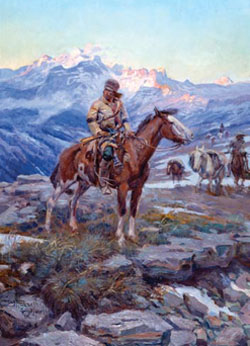Montana: Stories of the Land
Companion Website and Online Teacher's Guide
Chapter 5 - Beaver, Bison, and Black Robes: Montana's Fur Trade, 1800-1860
Chapter 1 - Montana: Where the Land Writes History
Chapter 2 - People of the Dog Days
Chapter 3 - From Dog Days to Horse Warriors
Chapter 4 - Newcomers Explore the Region
Chapter 5 - Beaver, Bison, and Black Robes
Chapter 6 - Montana's Gold and Silver Boom
Chapter 7 - Two Worlds Collide
Chapter 8 - Livestock and the Open Range
Chapter 9 - Railroads Link Montana to the Nation
Chapter 10 - Politics and the Copper Kings
Chapter 11 - The Early Reservation Years
Chapter 12 - Logging in the "High Lonesome"
Chapter 13 - Homesteading This Dry Land
Chapter 14 - Towns Have Lives, Too
Chapter 15 - Progressive Montana
Chapter 16 - Montana and World War I
Chapter 17 - Montanans on the Move
Chapter 18 - The Great Depression Transforms Montana
Chapter 19 - World War II in Montana
Chapter 20 - Building a New Montana
Chapter 21 - A People's Constitution
Chapter 22 - Living in a New Montana
Learning From Historical Documents
Broadside Announcing the Auction of Buffalo Robes, 1877. Benning & Barsalou Auctioneers records, 1876-1877. Small Collection 2366 . Montana Historical Society Research Center. Archives.
Context for the Broadside:
Fur trading was the beginning of a new economy in the West. In 1840 the American Fur Company shipped 67,000 bison robes. Thirty years later, hide hunters were killing an average of 1.5 million bison per year. A keen marksman could shoot several hundred bison and good skinners could skin 50 animals a day. Only the robes and tongues were valuable to the bison-hide trade.
Complete a Written Document Analysis Worksheet.
About Primary Sources:
Letters, diary entries, census records, newspapers, and photographs are all examples of "primary sources," material created at a particular moment in the past that has survived into the present. Primary sources can provide clues to the past. They are our windows into an earlier time. The Montana Historical Society contains thousands of primary sources. The above item from the Society's collection relates directly to this chapter.

